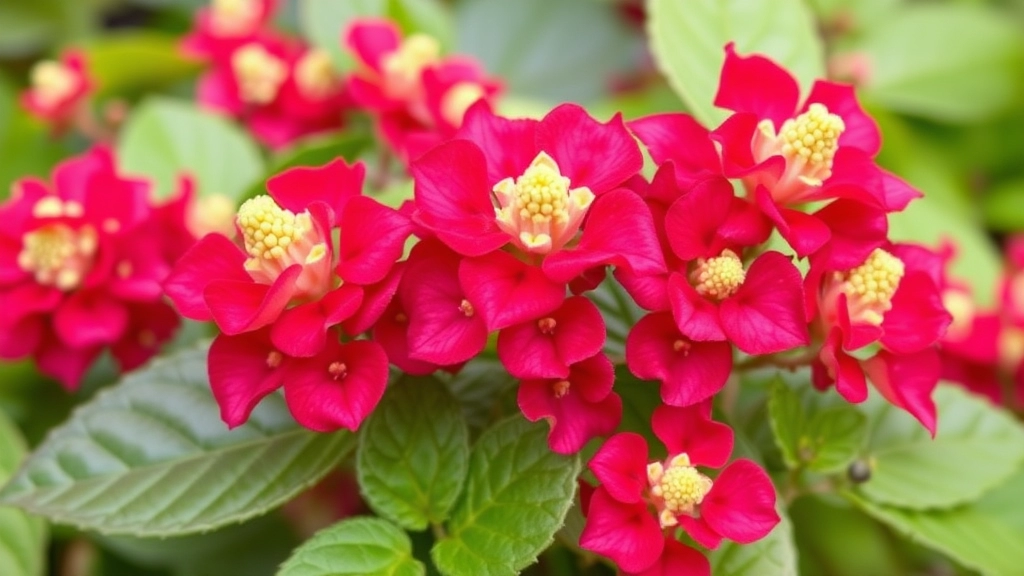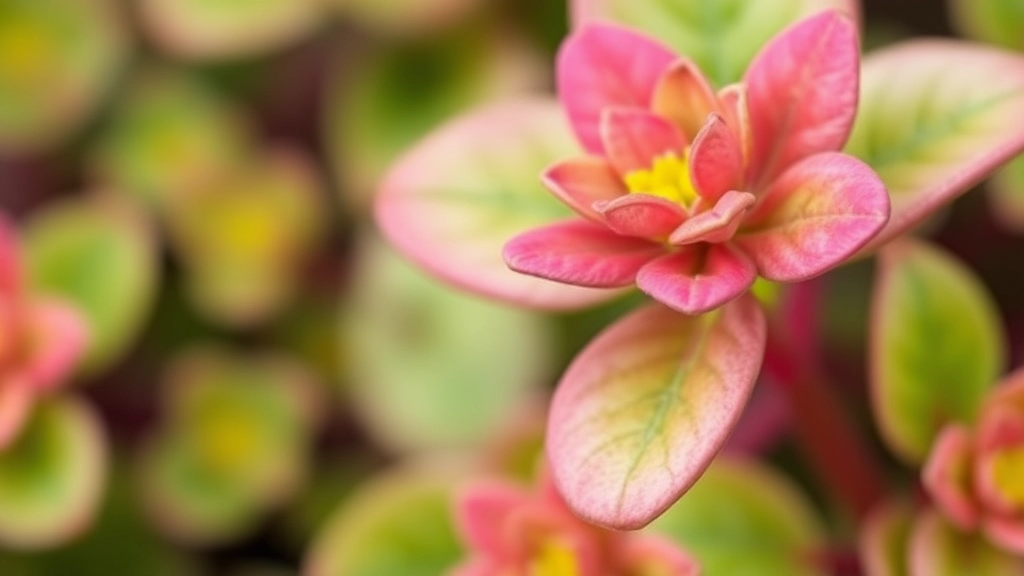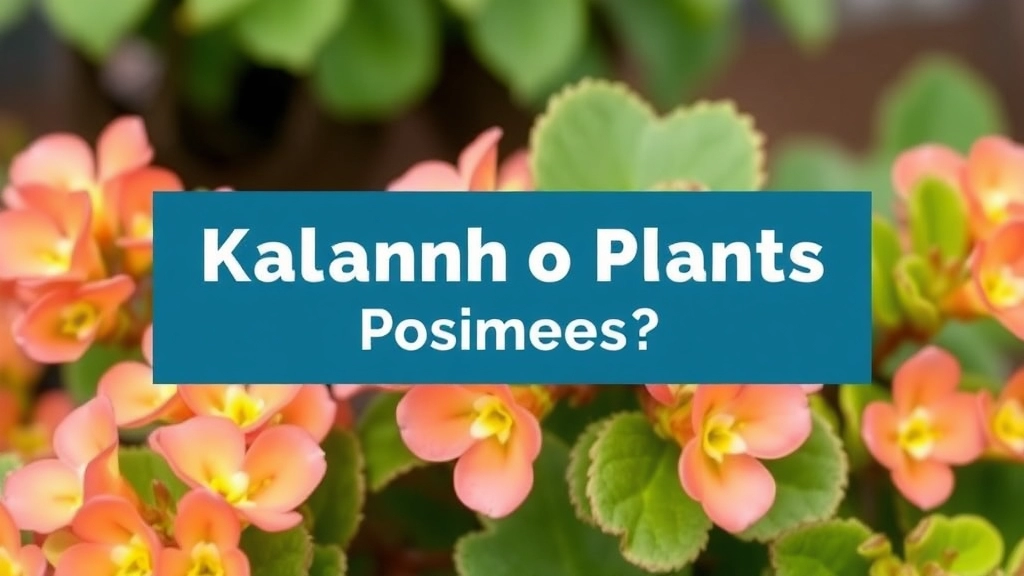Are Kalanchoe Plants Poisonous?
If you’re a pet owner or have small children, this is a crucial question. Kalanchoe plants, though beautiful and easy to care for, contain toxic compounds that can be harmful if ingested. Understanding the risks and symptoms of Kalanchoe poisoning is essential to keep your loved ones safe.
What to Expect in This Article
In this article, we’ll dive into the toxic components found in Kalanchoe plants, the signs of poisoning in both humans and pets, and effective prevention and safety tips. We’ll also cover immediate actions to take if poisoning occurs and suggest non-toxic alternatives for your home. Stay informed and ensure a safe environment for everyone.
Toxic Components Found in Kalanchoe Plants
When considering the beauty of Kalanchoe plants, many people overlook their potential dangers.
What makes Kalanchoe toxic?
Kalanchoe species contain several toxic components that can pose serious health risks to both humans and pets.
The primary toxic compounds are:
- Cardiac Glycosides: These are naturally occurring compounds that can disrupt heart function.
- Bufadienolides: Similar to cardiac glycosides, these can also affect heart rhythm and may lead to severe complications.
How do these toxins affect the body?
When ingested, these components can lead to a range of symptoms, including nausea, vomiting, and in severe cases, arrhythmias.
It’s crucial to be aware of these toxins, especially if you have pets or small children at home. For more information on protecting your pets, check out our guide on Kalanchoe tomentosa toxicity.
Additionally, if you’re interested in learning about other Kalanchoe varieties and their care, our top Kalanchoe succulent varieties guide provides comprehensive tips and insights.
Symptoms of Kalanchoe Poisoning in Humans and Pets

So, you’ve got a Kalanchoe plant at home, and you’re wondering, “What if my little one gets into it?” It’s a valid concern because Kalanchoe can be toxic.
Symptoms in Humans
If someone accidentally ingests Kalanchoe, here’s what might happen:
- Nausea: Feeling queasy? That’s often the first sign.
- Vomiting: Your body’s way of saying, “Get this out!”
- Diarrhoea: Not the most pleasant experience, but it can happen.
- Abdominal pain: You might feel some serious discomfort.
- Dizziness or confusion: This can be a bit scary, but it’s important to stay calm.
Symptoms in Pets
Now, if your furry friend decides to munch on a Kalanchoe leaf, keep an eye out for these symptoms:
- Lethargy: If your pet’s suddenly a couch potato, it’s a red flag.
- Vomiting: Just like us, pets can get sick too.
- Diarrhoea: Another common symptom in pets.
- Drooling: Excessive drooling can indicate something’s not right.
- Tremors: If you see shaking, it’s time to act quickly.
Prevention and Safety Tips for Handling Kalanchoe
As we delve into the crucial topic of prevention and safety, it’s essential to consider how to manage Kalanchoe plants effectively to avoid potential poisoning.
Understanding the Risks
Kalanchoe plants, while beautiful, contain toxic components that can affect both humans and pets. Here are some practical tips to ensure a safe environment:
- Placement Matters: Keep Kalanchoe plants out of reach of children and pets. A high shelf or a room that’s off-limits can make a significant difference.
- Educate Your Family: Make sure everyone in your household understands that Kalanchoe is not a plant to be touched or ingested. Use simple language and visuals if necessary.
- Use Clear Labels: If you have multiple plants, label your Kalanchoe clearly. This can prevent accidental contact and serve as a reminder of its toxicity.
- Monitor Your Pets: If you have pets that are prone to chewing on plants, consider using deterrents or providing alternative safe plants for them to explore.
- Regular Checks: Routinely inspect your Kalanchoe for any signs of wilting or damage. A healthy plant is less likely to attract curious nibblers.
- Wash Hands After Handling: Always wash your hands after touching Kalanchoe. This simple action can prevent accidental ingestion of toxins.
By implementing these safety measures, you can enjoy the beauty of Kalanchoe without compromising the safety of your loved ones. For more detailed care instructions, visit our ultimate guide to caring for Kalanchoe succulents and learn about the toxicity and safety tips for Kalanchoe Pink Butterflies.
Immediate Actions and Treatment for Kalanchoe Poisoning

If you suspect that someone has ingested Kalanchoe, it’s natural to feel anxious. The symptoms can vary, and knowing what to do next is crucial.
Immediate Steps to Take
- Stay Calm: Panic can cloud your judgment. Take a deep breath and focus on the next steps.
- Assess the Situation: Determine whether the individual is showing symptoms of poisoning, such as nausea, vomiting, or unusual behaviour.
- Remove the Source: If the person has Kalanchoe plant material in their mouth, encourage them to spit it out. Rinse their mouth thoroughly with water.
- Seek Medical Help: Contact a healthcare professional or poison control centre immediately. Provide them with details about the amount ingested and the symptoms observed.
- Do Not Induce Vomiting: Unless instructed by a medical professional, do not attempt to make the person vomit. This can sometimes cause more harm than good.
- Monitor Symptoms: Keep a close eye on the affected individual. If symptoms worsen, seek emergency medical attention right away.
Treatment Options
Upon reaching a medical facility, the healthcare team may carry out several actions:
- Observation: They may monitor vital signs and symptoms.
- Activated Charcoal: In some cases, activated charcoal may be administered to limit absorption of toxins.
- Supportive Care: Treatment will primarily focus on alleviating symptoms, such as administering fluids for dehydration or medications for nausea.
Prevention is Key
Taking immediate action can significantly impact the outcome of Kalanchoe poisoning.
Non-Toxic Alternatives for Pet Owners and Families
As we explore safer options for our homes, it’s essential to consider non-toxic plants that can bring beauty without the risk of poisoning.
Why Choose Non-Toxic Plants?
Many pet owners worry about the safety of their furry friends when it comes to houseplants. Choosing non-toxic alternatives ensures a harmonious environment for both pets and family members.
Top Non-Toxic Plants to Consider:
- Spider Plant (Chlorophytum comosum)
- Easy to care for and thrives in various conditions.
- Known for its air-purifying qualities.
- Bamboo Palm (Chamaedorea seifrizii)
- Adds a tropical feel while being safe for pets.
- Great for improving indoor air quality.
- Areca Palm (Dypsis lutescens)
- A stunning addition to any room.
- Non-toxic to both cats and dogs.
- Boston Fern (Nephrolepis exaltata)
- Lush and vibrant, perfect for hanging baskets.
- Requires a bit more humidity but worth the effort.
- Money Tree (Pachira aquatica)
- Symbolises good luck and prosperity.
- Safe for pets and easy to care for.
Tips for Selecting Non-Toxic Plants:
- Research Before You Buy: Always check plant toxicity before introducing a new plant into your home.
- Consult Resources: Websites like the ASPCA provide lists of non-toxic plants.
- Ask Local Nurseries: Staff can often recommend pet-safe options.
By opting for these non-toxic plants, you can create a beautiful and safe environment for both your family and pets. For those interested in learning more about plant safety, check out our guide on protecting your pets from plant toxicity. Additionally, if you are looking for a vibrant and safe addition to your home, consider the Kalanchoe Blossfeldiana, which is both beautiful and easy to care for.
FAQs About Kalanchoe Plant Poisoning
Are Kalanchoe plants poisonous to humans?
Yes, Kalanchoe plants can be toxic to humans if ingested. Symptoms may include nausea, vomiting, diarrhoea, abdominal pain, and dizziness or confusion.
What should I do if someone ingests a Kalanchoe plant?
Stay calm and follow these steps: assess the situation, remove the plant material from the mouth, rinse the mouth with water, and seek medical help. Do not induce vomiting unless advised by a healthcare professional.
Are Kalanchoe plants poisonous to pets?
Yes, Kalanchoe plants are toxic to pets. Symptoms in pets can include lethargy, vomiting, diarrhoea, drooling, and tremors.
What immediate actions should I take if my pet ingests Kalanchoe?
If you suspect your pet has ingested Kalanchoe, contact your veterinarian immediately. In the meantime, try to keep your pet calm and monitor for any symptoms of poisoning.
What treatments are available for Kalanchoe poisoning?
Upon reaching a medical facility, treatment may include observation, administration of activated charcoal, and supportive care to alleviate symptoms such as dehydration and nausea.
How can I prevent Kalanchoe poisoning?
Prevention is crucial. Keep Kalanchoe plants out of reach of children and pets, and educate family members about the potential risks.
